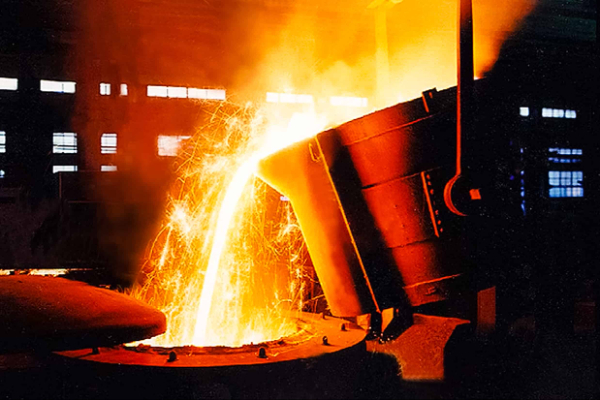Refractory materials for induction furnaces need to be selected based on the furnace type, furnace structure, type of steel being smelted, smelting process operating conditions, etc. At the same time, the changes in the phase and physical properties of the refractory material from room temperature to working temperature need to be considered. Process and change mechanism, as well as refractory material application conditions, etc.

Refractory materials used in induction furnaces
When melting cast iron and non-ferrous metals in a coreless induction furnace, SiO2, ZrO2·SiO2, and complex phase refractory materials composed of them are generally selected. Because ZrO2·SiO2 decomposes at high temperatures to form ZrO2 and fSiO2, which are evenly distributed in the material, thus imparting high-temperature plasticity and corrosion resistance to the material, indicating that ZrO2 can extend the service life of SiO2-based refractory materials.
Coreless induction furnaces can use acid steelmaking methods or alkaline steelmaking methods. The refractory materials used in acid steelmaking are the same as those used in smelting cast iron, while neutral or alkaline refractory materials are used in alkaline steelmaking.
When making steel in small coreless induction furnaces, magnesia refractory materials are usually used as linings. However, this refractory material has poor thermal shock resistance and is easily penetrated by slag, resulting in structural spalling and premature damage, so it is difficult to adapt to large capacities. , Intermittent operating environment.
Normally operating medium-sized coreless induction furnaces use refractory materials made of MgO-Al2O3 or MgO-Spinal mixtures when making steel. They are all MgO-spind refractory materials.
Medium-sized coreless induction furnaces that use a variety of scrap steel as raw materials to make steel use Al2O3-MgO (about 10% MgO) refractory materials to achieve a long service life.
Medium-sized induction furnaces using direct reduced iron balls as additives should use MgO-Al2O3-Cr2O3 (added chromium ore) refractory materials. Since MgO, Al2O3, Cr2O3, etc. react to form composite spinel when heated at high temperatures, it has high fire resistance and strong corrosion resistance. As a result, its adaptability to high-erosion iron/manganese slag is improved, so its service life is improved. long.
Large coreless induction furnaces use spinel refractory materials made of pre-synthesized Spinel granules or a mixture composed of MgO (coarse particles, fine powder), Spinel (medium particles, fine powder), and Al2O3 particles. At the same time, MgO-Spine refractory materials are made by carefully balancing the ratio of pre-synthesized Spinel and in-situ Spinel. Both types of refractory materials can adapt to the operating conditions of large coreless induction furnaces.

The operating temperature of the cored induction furnace for smelting gray iron and cast iron is 1450~1550℃, which is not very high. Although the temperature at the inductor molten trench and water jacket is as high as 1600~1700°C, the selection of refractory materials is not very difficult because water cooling is implemented.
Coreless induction furnaces mainly use knotting methods to build linings, while cored induction furnaces mainly use pouring methods to build linings. Knotted-lined refractory materials form a sintered layer during the sintering process. In order to obtain high adaptability, it is expected that the expansion of the sintered layer and the increase in strength proceed slowly. Therefore, the formula design and raw material selection of refractory materials should ensure that the working surface in contact with the high-temperature melt during the lining operation can be sintered to form a sintered layer with a certain strength, while the non-working layer should maintain the scattered structure before sintering. This kind of structure has the function of preventing the migration of cracks in the working layer and absorbing cracks, thereby laying a good foundation for extending the service life of the lining.
 Rongsheng Group
Rongsheng Group

WeChat
Scan the QR Code with wechat